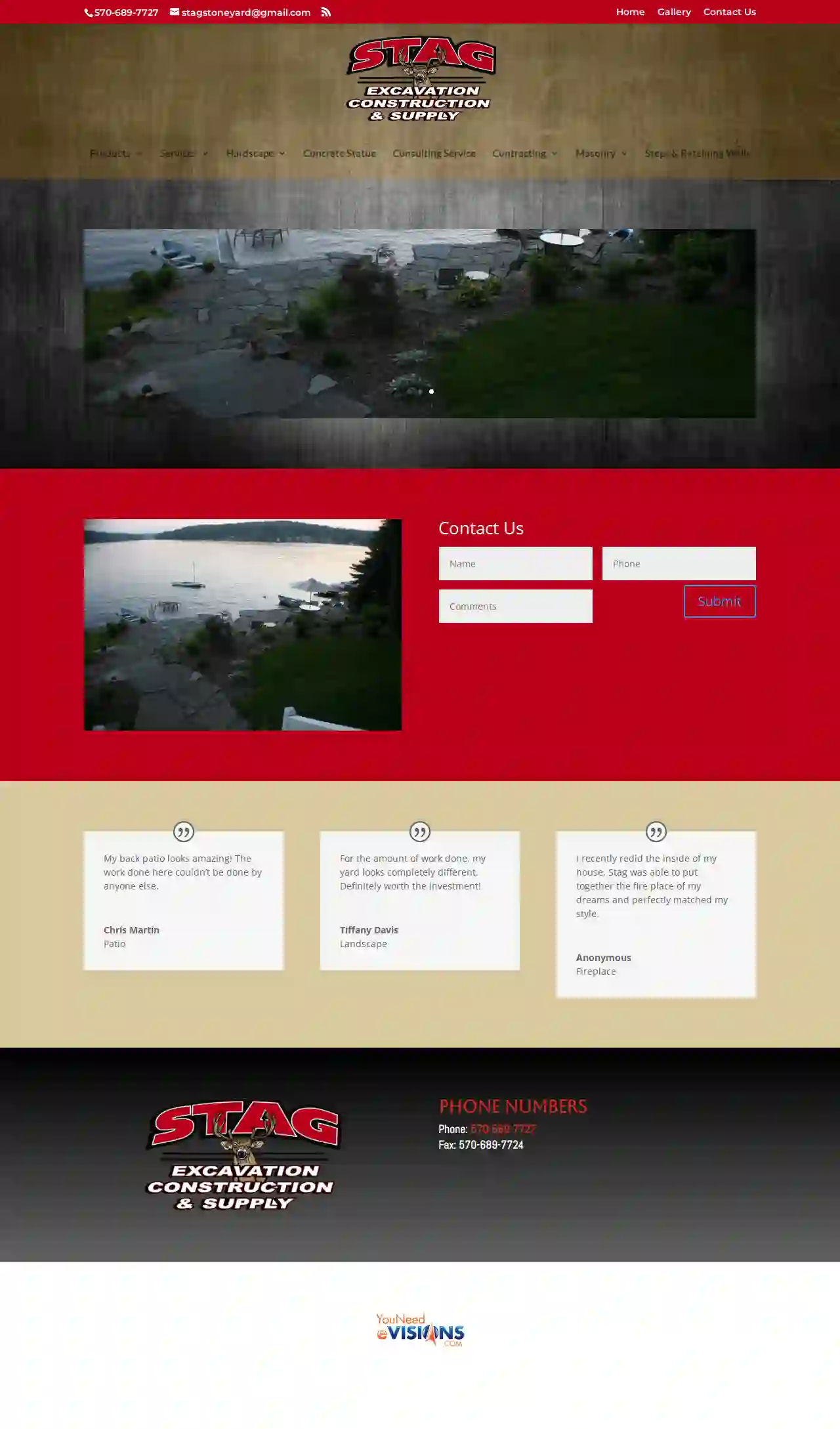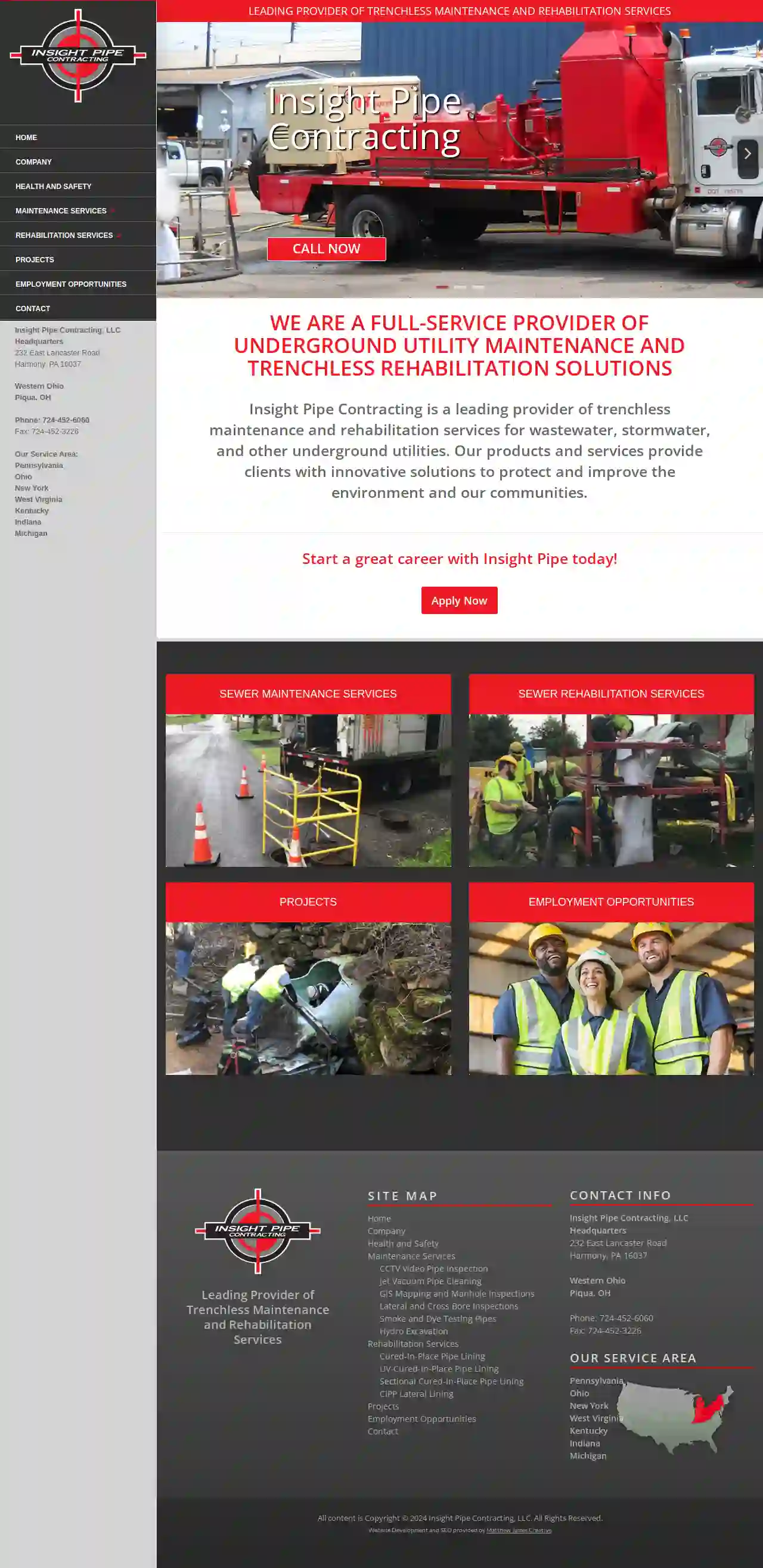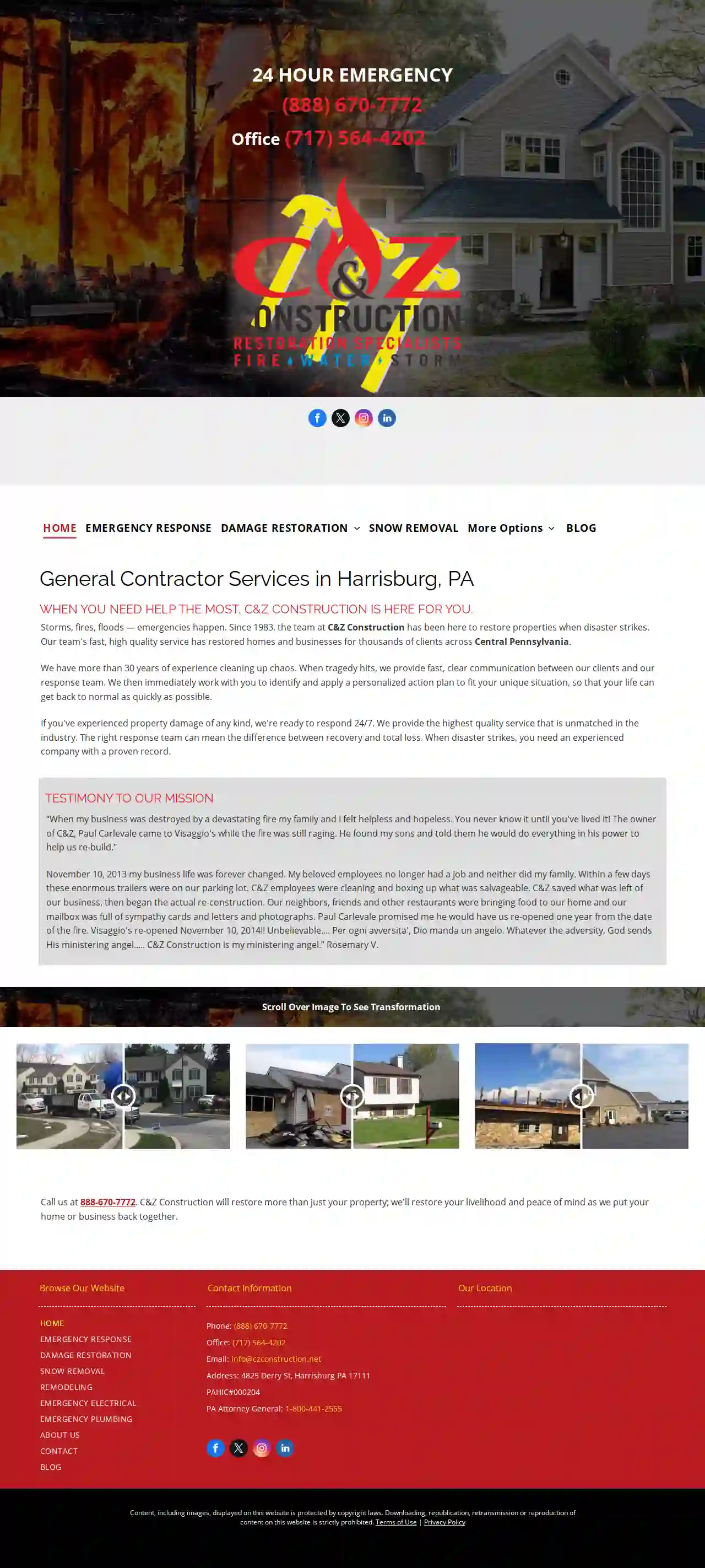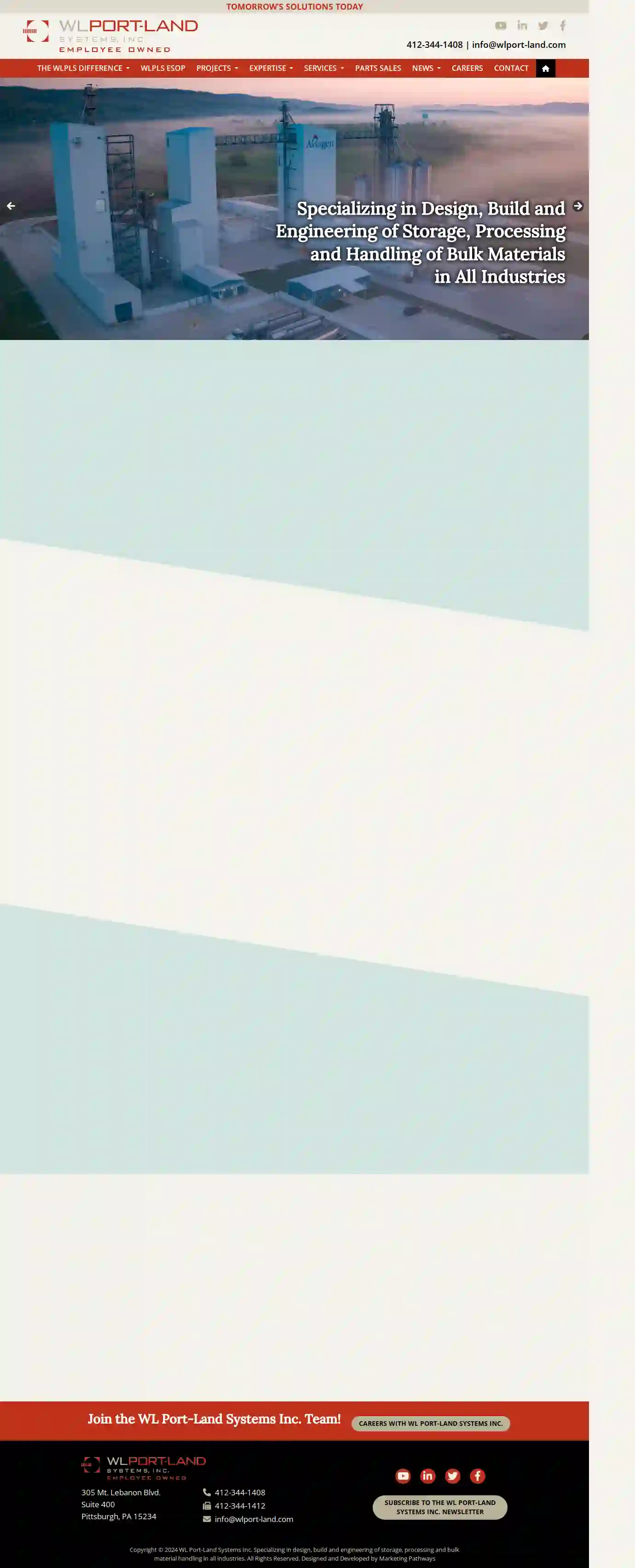Demolition Contractors Hanover
Top 10 Building Demolition in Hanover
Get 3 FREE Demo Contractor quotes for your project today! Compare profiles, reviews, accreditations, portfolio, etc... and choose the best service.

Stag Excavation Construction & Supply
52 reviewsHamlin, USStag Excavation & Stone Yard Stag Excavation & Stone Yard is a family-owned and operated business serving the Hamlin, PA area. We offer a wide range of services, from excavating and demolition to hardscaping and custom home construction. We are committed to providing our clients with high-quality workmanship and exceptional customer service. Our team of experienced professionals is dedicated to exceeding your expectations and delivering projects on time and within budget. We are proud to be a trusted name in the community and look forward to serving your needs. We are located just outside of Hamlin Corners in Hamlin PA. We offer free estimates on all of our services. Contact us today to schedule a consultation.
- Services
- Why Us?
- Testimonials
- Gallery
Get Quote
Big Horn Excavating LLC
Lykens, PA, 17048, USExcavation Company It doesn’t matter whether an excavation job is straightforward or complex, every project could benefit from professionalism—and that is why so many people look to Big Horn Excavating LLC when they are in need. Offering exceptional excavation services, we are the contractors that set big projects in motion. We work alongside landscapers, homeowners, and general contractors on a regular basis. So whether you are looking for someone to prepare a site for basement construction or dredge silt and muck from a community pond, we are the ones you can count on. Skilled in All Excavation Services We pride ourselves on our versatile nature. Our contractors might find themselves offering services to aid in installing a stormwater drain one day, only to be excavating earth and topsoil for a backyard pond the next day. Some of the additional excavation services we offer include: Earth moving Grading Rock removal Basement excavation Site preparation services And more With so many services at your disposal, you will never have to look to another excavation team ever again. Reach out to us today to learn more about the services we offer. All the Excavation Equipment Needed Every excavation project is different. Thankfully, we are always prepared for whatever obstacle comes our way. Between our years of experience and vast storehouse of equipment, our accredited team always rises to the occasion. We move mountains for our clients—along with topsoil, earth, rock, and debris. When your upcoming project calls for an excavator, look to us. Serving the Entire Community We deliver grading and excavation solutions for industries and individuals of all distinctions. Some of the professionals we commonly work with include: Real estate developers Municipal construction operations Engineers Architecture firms General contractors Utility companies Our versatile nature allows us to envision the entire scope of our client’s construction projects. In doing so, we lay the best foundation possible for all the work to come. If you would like to learn more about our services, please feel free to contact our offices at your convenience. Excavation and Excellent Customer Service When it comes to your construction projects, you only want professionals on site. Rest assured, you will absolutely love our professional yet personable approach to excavation. We are always happy to answer your questions and address any concerns you might have.
- Services
- Why Us?
- Gallery
Get Quote
Strouse Excavating and Landscaping
56 reviewsHarrisburg, USRF Strouse Landscape Excavate: Your Trusted Partner for Excavation, Landscaping, and Winter Services in Mount Wolf, PA We pride ourselves on providing exceptional services to residential and commercial clients throughout Mount Wolf, PA. With a commitment to quality, safety, and customer satisfaction, we offer a comprehensive range of services to meet all your property maintenance and improvement needs. From expert excavation to stunning landscape design and reliable winter services, we are your go-to solution for transforming and maintaining your outdoor spaces.
- Services
- Why Us?
- Gallery
Get Quote
Insight Pipe Contracting, LLC
3.912 reviews232 East Lancaster Road, Harmony, 16037, USInsight Pipe Contracting, LLC Insight Pipe Contracting is a leading provider of trenchless maintenance and rehabilitation services for wastewater, stormwater, and other underground utilities. Our products and services provide clients with innovative solutions to protect and improve the environment and our communities.
- Services
- Why Us?
- Gallery
Get Quote
Diggerman Excavating
819 Lake Henry Rd., Lake Ariel, 18436, USLooking for a rock and excavation specialist? You've come to the right place! With extreme attention to detail and a passion for excavating, the Diggerman is the man you need for your project!
- Services
- Why Us?
- Gallery
Get Quote
David H. Martin Excavating, Inc.
4.350 reviews4961 Cumberland Highway, Chambersburg, 17202, USYour Complete Excavating Solution Your projects deserve a reliable partner in delivering highly trained and trusted excavation solutions for jobs of any size. Our highly trained team is equipped with the skills and capabilities designed for residential homeowners to commercial project managers. Excellence & Integrity We understand the frustrations that arise with extended project completion dates, unexpected costs, and uncommunicative teams. Excellence and integrity are at the core of everything we do—it’s not just what we do, but the foundation for all that we are. Expect your project to be completed and on time—everytime.
- Services
- Why Us?
- Our Team
- Testimonials
Get Quote
CAG Construction Corp.
30 Summit Ave., Staten Island, 10306, USCAG Construction: Your Trusted Partner for Concrete Construction and Site Work CAG Construction is a family-run business established in 2007, specializing in all phases of concrete construction and site work. We are committed to delivering projects within budget, on time, and with the utmost professionalism. Our team has the experience and expertise to work seamlessly with project managers and design teams, ensuring a smooth construction process. Our Commitment to Excellence Edward Gonzalez, our founder, is a graduate of the NYC Small Business Services Construction Mentorship Program, NYC SBS Bond Readiness Program, and the New York City Economic Development Corporation – Construct NYC Program. This comprehensive training has equipped us with the knowledge and skills to deliver exceptional results. Certifications and Accreditations We are proud to be a New York City MBE Certified company, demonstrating our commitment to diversity and inclusion. We are also SCA Approved and a member of the National Association of Minority Contractors (NAMC), further solidifying our dedication to industry standards and ethical practices.
- Services
- Why Us?
- Gallery
Get Quote
C&Z Construction
4.332 reviews4825 Derry St, Harrisburg PA, Harrisburg, 17111, USWhen you need help the most, C&Z Construction is here for you. Storms, fires, floods — emergencies happen. Since 1983, the team at C&Z Construction has been here to restore properties when disaster strikes. Our team's fast, high quality service has restored homes and businesses for thousands of clients across Central Pennsylvania. We have more than 30 years of experience cleaning up chaos. When tragedy hits, we provide fast, clear communication between our clients and our response team. We then immediately work with you to identify and apply a personalized action plan to fit your unique situation, so that your life can get back to normal as quickly as possible. If you've experienced property damage of any kind, we're ready to respond 24/7. We provide the highest quality service that is unmatched in the industry. The right response team can mean the difference between recovery and total loss. When disaster strikes, you need an experienced company with a proven record. TESTIMONY TO OUR MISSION “When my business was destroyed by a devastating fire my family and I felt helpless and hopeless. You never know it until you've lived it! The owner of C&Z, Paul Carlevale came to Visaggio's while the fire was still raging. He found my sons and told them he would do everything in his power to help us re-build." November 10, 2013 my business life was forever changed. My beloved employees no longer had a job and neither did my family. Within a few days these enormous trailers were on our parking lot. C&Z employees were cleaning and boxing up what was salvageable. C&Z saved what was left of our business, then began the actual re-construction. Our neighbors, friends and other restaurants were bringing food to our home and our mailbox was full of sympathy cards and letters and photographs. Paul Carlevale promised me he would have us re-opened one year from the date of the fire. Visaggio's re-opened November 10, 2014!! Unbelievable.... Per ogni avversita', Dio manda un angelo. Whatever the adversity, God sends His ministering angel..... C&Z Construction is my ministering angel.” Rosemary V.
- Services
- Why Us?
- Testimonials
- Gallery
Get Quote
W L Port-Land Systems
51 reviews305 Mt. Lebanon Blvd., Suite 400, Pittsburgh, 15234, USWL Port-Land Systems Inc. is now an ESOP! WL Port-Land Systems Inc. is excited and proud to announce that we are now a 100% employee-owned business through an Employee Stock Ownership Plan (ESOP). Although company ownership has been transferred to the ESOP, company leadership remains unchanged, and all employees remain committed to the high level of quality, professionalism and customer service that we consistently provide to our customers. Rooted in the engineering field since 1975, WL Port-Land Systems Inc. offers a diverse expertise to provide solutions for your design/build, renovation and engineering projects. With a history of success in the feed and grain trade, today WL Port-Land Systems Inc. specializes in the storage, processing and bulk materials handling in all industries. We will partner with your company to provide engineering solutions that help you to build or renovate your facilities to ensure they are of the highest quality and performing at an optimum efficiency to help drive your business.
- Services
- Why Us?
- Gallery
Get Quote
USA Asphalt Paving Contractors
4.559 reviews3 N Line Rd, Newtown Square, 19073, USUSA Asphalt Paving Contractors: Your Trusted Paving Partner in Chester and Delaware Counties PA We understand that your driveway, parking lot, or sidewalk can be a source of frustration when they're cracked, faded, or uneven. That's why we're here to provide you with the solutions you need. We're a team of experienced paving contractors in Delaware County and Chester Counties PA, dedicated to delivering high-quality workmanship, competitive pricing, and exceptional customer satisfaction. With over 20 years of experience serving Delaware County, Chester County, Montgomery County, and beyond, we've earned a reputation for excellence. Our commitment to quality and professionalism has been recognized by leading consumer organizations. We're not just a paving contractor; we're your paving partner. We're here to help you with any paving, asphalt, or concrete services you need, making your life easier, your property safer, and your curb appeal higher. Don't settle for less. Why Choose USA Asphalt Paving Contractors? You have options, but not all paving contractors are created equal. Inexperienced contractors, unlicensed professionals, and uninsured companies can cost you time, money, and property. We understand the importance of choosing a reliable and trustworthy partner for your paving needs. At USA Asphalt Paving Contractors, we're experienced, licensed, and insured, with years of industry know-how. We're quality-oriented and competitively priced, ensuring you get the best value for your investment. We're detail-oriented experts who prioritize safety while delivering beautiful results. Don't risk your hard-earned cash on just anyone; trust the best when it comes to asphalt paving. Our Services We're your one-stop shop for all your asphalt, pavement, and concrete needs. We have the expertise and equipment to handle any size project, from small driveways to major roadways. Our comprehensive services include: Asphalt paving for driveways, parking lots, private roads, and more. We'll install, repair, or replace any asphalt surface you have, creating smooth, durable, and attractive surfaces that will last for years. Masonry and brickwork for walls, fireplaces, chimneys, and more. We can build, repair, or restore any masonry or brickwork, adding value and charm to your property. Concrete services for sidewalks, curbs, patios, and more. We'll install, repair, or replace any concrete surface, creating strong, stable, and versatile surfaces for any purpose. We can customize our services to fit your specific needs and preferences. We can also integrate certain services to create a comprehensive package for your project. We'll provide you with our honest assessment and recommendations to ensure you get the best possible results. Choose USA Asphalt Paving Contractors for guaranteed results at a price you can agree with!
- Services
- Why Us?
- Gallery
Get Quote
Over 22,076+ Excavation Contractors on our platform
Our excavation contractors operate in Hanover and surroundings!
ExcavationHQ has curated and vetted the Best Excavation Companies in Hanover. Find a top & reliable business today.
Frequently Asked Questions About Demolition Contractors
- Experience: Look for companies with a proven track record and years of experience in the demolition industry.
- Licensing and Insurance: Ensure the contractor is properly licensed to operate in your area and carries adequate insurance to protect you from liability.
- Safety Record: Inquire about their safety protocols and accident history. A reputable contractor prioritizes safety.
- References and Reviews: Ask for references from past clients and check online reviews to gauge their reputation and customer satisfaction.
- Professionalism: Choose a company that communicates clearly, provides detailed estimates, and has a courteous and responsive team.
- Site Security: Secure the demolition site with fencing and warning signs to prevent unauthorized access.
- Personal Protective Equipment (PPE): Workers should wear appropriate PPE, including hard hats, safety glasses, gloves, and steel-toe boots.
- Hazardous Material Removal: Properly identify and remove asbestos, lead paint, or other hazardous materials before demolition begins.
- Utility Disconnections: Disconnect all utilities, such as electricity, gas, and water, before demolition.
- Controlled Demolition Techniques: Employ controlled demolition methods to minimize risks and ensure the structure comes down safely.
- Dust Control: Implement dust suppression measures, such as water spraying or misting, to reduce airborne particles and protect air quality.
- Emergency Planning: Have an emergency plan in place, including communication protocols and evacuation procedures, in case of unforeseen events.
- Clear the Site: Remove all furniture, appliances, personal belongings, and any valuable items from the structure.
- Secure the Perimeter: Fence off the demolition area to prevent unauthorized access and protect surrounding property.
- Disconnect Utilities: Arrange for the disconnection of electricity, gas, water, and other utilities servicing the building.
- Hazardous Material Abatement: If asbestos, lead paint, or other hazardous materials are present, have them professionally removed before demolition begins.
- Notify Neighbors: Inform your neighbors about the demolition schedule to minimize disruptions and address any concerns.
- Obtain Permits: Ensure all necessary demolition permits are in place before starting work.
- Feasibility Studies: Assessing the viability and challenges of a demolition project.
- Demolition Planning: Developing demolition plans, including method selection, sequencing, and safety procedures.
- Permitting Assistance: Navigating the demolition permitting process and ensuring compliance with regulations.
- Hazardous Material Surveys: Identifying and managing hazardous materials, such as asbestos and lead paint.
- Cost Estimating: Providing accurate cost estimates for demolition services.
- Project Management: Overseeing the demolition process and ensuring it proceeds as planned.
How do I find a reputable demolition contractor?
What are the safety precautions for demolition?
How do I prepare my property for demolition?
What is the role of a demolition consultant?
How do I find a reputable demolition contractor?
- Experience: Look for companies with a proven track record and years of experience in the demolition industry.
- Licensing and Insurance: Ensure the contractor is properly licensed to operate in your area and carries adequate insurance to protect you from liability.
- Safety Record: Inquire about their safety protocols and accident history. A reputable contractor prioritizes safety.
- References and Reviews: Ask for references from past clients and check online reviews to gauge their reputation and customer satisfaction.
- Professionalism: Choose a company that communicates clearly, provides detailed estimates, and has a courteous and responsive team.
What are the safety precautions for demolition?
- Site Security: Secure the demolition site with fencing and warning signs to prevent unauthorized access.
- Personal Protective Equipment (PPE): Workers should wear appropriate PPE, including hard hats, safety glasses, gloves, and steel-toe boots.
- Hazardous Material Removal: Properly identify and remove asbestos, lead paint, or other hazardous materials before demolition begins.
- Utility Disconnections: Disconnect all utilities, such as electricity, gas, and water, before demolition.
- Controlled Demolition Techniques: Employ controlled demolition methods to minimize risks and ensure the structure comes down safely.
- Dust Control: Implement dust suppression measures, such as water spraying or misting, to reduce airborne particles and protect air quality.
- Emergency Planning: Have an emergency plan in place, including communication protocols and evacuation procedures, in case of unforeseen events.
How do I prepare my property for demolition?
- Clear the Site: Remove all furniture, appliances, personal belongings, and any valuable items from the structure.
- Secure the Perimeter: Fence off the demolition area to prevent unauthorized access and protect surrounding property.
- Disconnect Utilities: Arrange for the disconnection of electricity, gas, water, and other utilities servicing the building.
- Hazardous Material Abatement: If asbestos, lead paint, or other hazardous materials are present, have them professionally removed before demolition begins.
- Notify Neighbors: Inform your neighbors about the demolition schedule to minimize disruptions and address any concerns.
- Obtain Permits: Ensure all necessary demolition permits are in place before starting work.
What is the role of a demolition consultant?
- Feasibility Studies: Assessing the viability and challenges of a demolition project.
- Demolition Planning: Developing demolition plans, including method selection, sequencing, and safety procedures.
- Permitting Assistance: Navigating the demolition permitting process and ensuring compliance with regulations.
- Hazardous Material Surveys: Identifying and managing hazardous materials, such as asbestos and lead paint.
- Cost Estimating: Providing accurate cost estimates for demolition services.
- Project Management: Overseeing the demolition process and ensuring it proceeds as planned.